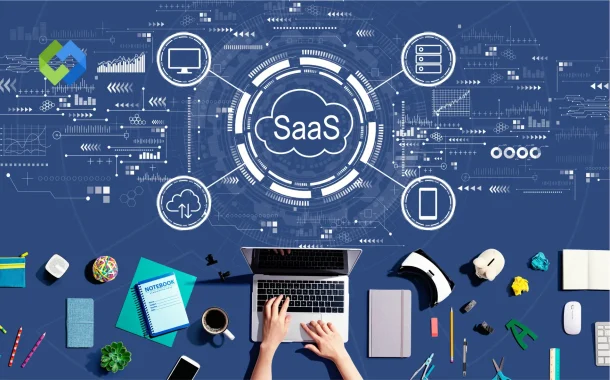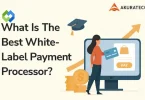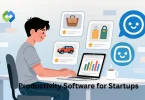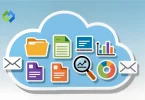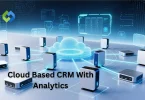Let us explore the key SaaS tools available to nonprofits today.
Table of Contents
Table of Contents
10 SaaS Tools for Nonprofits in 2026
Nonprofits need SaaS tools. They help manage teams, create content, promote fundraising, raise funds, and build stronger donor relationships.
1. Donor Management (CRM software)
Manage contacts, track marketing activities, and centralize communication.
Examples:
A] Donorbox is an AI-powered donor management and fundraising software specially designed for nonprofits. It features a centralized donor profile, AI-powered segmentation, an integrated email system, and donation management. It also offers advanced fundraising tools, such as peer-to-peer campaigns, crowdfunding, membership campaigns, and text-to-give.
B] DonorPerfect is a donor management and fundraising software. Nonprofits can customize fundraising tools, manage and track donations and gifts, process pledges, and engage donors.
2. Research Software
Understand donors’ philanthropic interests, inclinations, and giving capacity.
Examples:
A] DonorSearch AI assists in understanding donors’ philanthropic interests, inclinations, and giving capacity. As a result, fundraisers can target potential donors more precisely rather than relying on mass outreach with limited success.
B] iWave enables nonprofits to raise funds with confidence. It uses predictive scores, advanced modelling, and real-time data to target prospective donors and qualify them for engagement.
3. Generative AI for Email Drafting and Content Creation
Analyze performance, segment lists, and create customized emails.
Examples:
A] ChatGPT Enterprise can analyze performance, segment lists, and generate personalized emails. Moreover, it can set the tone and subject lines to increase engagement.
B] Jasper AI is an AI writing assistant. It helps to create marketing collaterals like blog posts, product descriptions, PowerPoint summaries, and social media content
4. Marketing Automation Tools
Segment audiences, perform real-time tracking, and create custom donor journeys.
Examples:
A] HubSpot empowers nonprofits’ customer support, sales, and marketing. It includes key features, such as live chat, email tracking, and meeting scheduling.
B] Mailchimp is a popular email marketing platform used to send newsletters and automated emails for donors. Nonprofits can send receipts or thank-you messages upon receiving donations.
5. Event Management Tools
Ease administrative tasks and engage with donors and guests.
Examples:
A] Eventbrite helps nonprofits set up an event, create an inventory list, send invitations, track event attendees, distribute marketing materials, and prepare checklists.
B] Givebutter helps nonprofits plan events. It offers free ticketing, registration, mobile check-in, and peer-to-peer fundraising and donation options.
6. Project Management Tools
Help employees and volunteers work from anywhere and still manage the project efficiently.
Examples:
A] Asana tracks past calendar years, projects, or campaigns, and project templates for re-use. Non-profits can review and organize documents to gain real-time feedback.
B] Leveraging such a centralised platform streamlines operations, making projects more efficient and saving valuable resources. To maximise these savings, organisations often look for ways to reduce operational costs, such as securing a Monday.com discount when purchasing licenses for their entire team.
7. Crowdfunding and Donation Management Tools
Simplify, track, and accelerate the donation management process.
Examples:
A] With Fundly, nonprofits can launch crowdfunding campaigns, share them through social channels, and track donor movements.
B] OneCause helps bid through mobiles, supports recurring giving, and engages donors in virtual and in-person events.
C] Donorbox is an AI-powered CRM software and fundraising tool, too. It helps nonprofits raise funds for noble causes with less effort.
8. Financial Management Tools
Simplify financial processes and complete your numbers hassle-free.
Examples
A] QuickBooks helps in time tracking, accounting, bookkeeping, and other financial services. It minimizes human errors and saves time.
B] Stripe helps to monitor accounts securely in real-time. It processes online payments.
9. Analytics Tools
Measure campaign performance, website traffic, and donor behavior.
Examples:
A] Google Analytics helps optimize fundraising strategies by tracking website visitors, donor behavior, referral sources, and conversion rates.
B] Tableau analyzes data and presents it in visual forms. They can request donations from anywhere in the world through the Tableau desktop.
10. Data Security and Compliance
Protect donor data and stay compliant with regulations.
Examples:
A] Cloudflare CDN provide free DDoS protection, WAF, and SSL certificates. It also enhances speed and reduces risk for nonprofits.
B] OneTrust helps nonprofits manage privacy policies, earn donors’ consent, and automate compliance. It reduces risk through AI governance and builds trust.
Important points
All these SaaS tools are productive. However, the real benefit lies in building an integrated ecosystem. APIs and native integration can bring them together, making work easier and convenient.
Integrating AI is an added advantage. Nonprofits that are tech-savvy and modern can save time and earn donations for sustainability.
FAQs:
What are SaaS tools?
SaaS tools are cloud-based applications that help nonprofits to raise funds, manage donors, track campaigns, and more. AI-empowered SaaS tools are recommended to stay competitive.
Can small nonprofits and corporates use SaaS tools?
Yes, SaaS tools offer free tiered pricing plans. It helps small nonprofits or individuals start immediately and scale up as they grow.
Should you be technical to use these tools?
No! Most SaaS tools are easy to use and intuitive. Non-tech people can handle them hassle-free.

